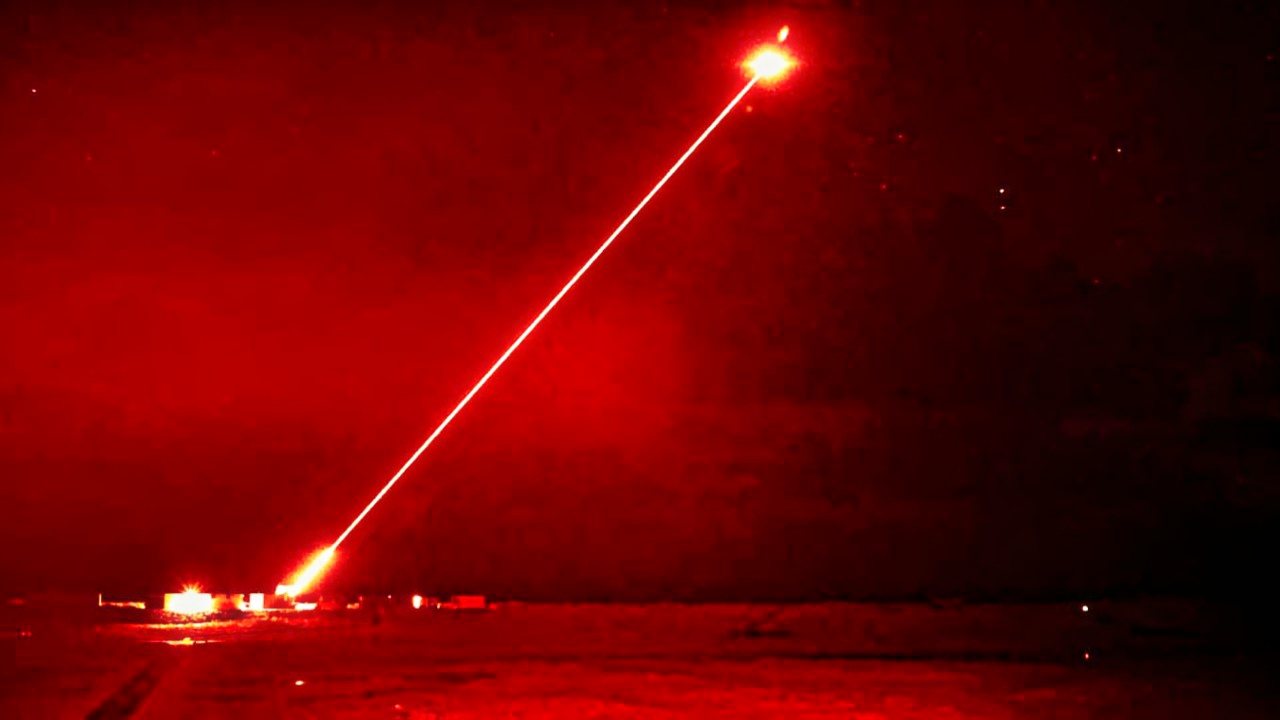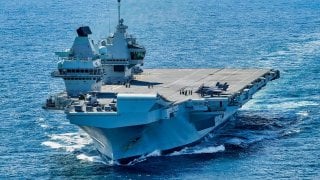Forget Aircraft Carriers: The Royal Navy Is Going Big with Laser Weapons
The UK Royal Navy, once renowned for its dominant fleet, is embracing a new era with the development of Multi Role Support Ships (MRSS). These advanced warships, set to replace aging amphibious assets by the early 2030s, will support Royal Marines Commando Forces globally. Equipped with laser weapons and capabilities to launch unmanned aerial systems, MRSS will enhance naval operations.
Summary: The UK Royal Navy, once renowned for its dominant fleet, is embracing a new era with the development of Multi Role Support Ships (MRSS). These advanced warships, set to replace aging amphibious assets by the early 2030s, will support Royal Marines Commando Forces globally. Equipped with laser weapons and capabilities to launch unmanned aerial systems, MRSS will enhance naval operations. This initiative is part of a broader resurgence in British shipbuilding, with 28 ships and submarines in development.

-The MRSS will ensure the UK maintains its naval prowess, countering threats from nations like China and Russia, while supporting various missions worldwide.
UK Royal Navy's Future: Multi-Role Support Ships with Laser Weapons
The UK's Royal Navy was once known for its "wooden ships and iron men" that allowed it to rule the waves around the globe. It later had the most numerous fleet of battleships, but today is a much smaller force with just two "troubled" aircraft carriers. However, the Royal Navy could be leading the way to the future as the British military's senior service announced that development has begun on a new class of Multi Role Support Ships (MRSS), which will be specialist warships designed to rapidly transport a Royal Marines Commando Force from sea to shore around the world.
Instead of being a big-gun battleship to support amphibious landings, the MRSS could be fitted with laser weapons and used to launch unmanned aerial systems (UAS) or drones.
New Golden Age for UK Shipbuilding
The planned six MRSS are just one program for the Royal Navy, which is now seeing a significant resurgence.
"With up to 28 ships and submarines being built or in the pipeline, this is a new Golden Age for British shipbuilding. The new vessels for the Royal Marines will help our brave Commandos fight the conflicts of the future," explained Britain's Secretary for Defence Grant Shapps. "This is all possible because this government has committed to spending 2.5% of GDP on defence by the end of the decade, as part of our plans to deliver a more secure future for you and your family."
According to the UK Defence Journal, the Ministry of Defence (MoD) has entered the first, or Concept, phase of the MRSS Program. It will continue work with British industry as part of early market engagement ahead of developing the vessel design.
The future six MRSS vessels will replace, by the early 2030s, the aging Land Platform Docks HMS Albion and HMS Bulwark, and the Landing Ship Dock (Auxiliaries) RFA Mounts Bay, Cardigan Bay, and Lyme Bay, as well as the Aviation Support Ship RFA Argus. Those amphibious assets have been on the cutting block for decades, and the MRSS could offer greater capabilities for the Royal Marines.
In addition, the new class of warships could enable the Royal Navy to continue to maintain its three core capabilities, which include continuous at-sea nuclear deterrent, carrier strike, and MRSS-enabled littoral strike.
Countering China in the Indo-Pacific, Russia in Europe
The Defence Secretary told The Telegraph newspaper that the support ships could be needed by the Royal Navy to fight and win future battles with China at sea.
"We're making these critical investments in shipbuilding to build the future Royal Navy needed to deter our adversaries, and then win if they are not deterred," said Shapps. "As nations like China and Russia invest heavily in their militaries we must make sure the UK leads our allies so that the West is not left behind."
Though the design has yet to be finalized, the MRSS vessels are likely to feature docks for landing craft, a hangar as well as a launch pad for a Chinook helicopter, while it will also have the ability to host and launch attack drones from a dock that can be lowered into the water. The program also calls for the MRSS to be equipped with the DragonFire, the now-in-development high-powered laser-directed energy weapon (LDEW) that could be employed to shoot down enemy drones and missiles.
"This is the thing which secures the Commando's future," Shapps added. "The Royal Marines, in decades to come, are secure in their future with the new fleet of ships being built."
Shapps further suggested that the Royal Navy will continue to be a "blue water" force that is able to go anywhere in the world. At the same time, it has looked to the lessons of the war in Ukraine – notably Russia's naval losses from drone attacks and shore-based missile launchers. Moreover, the multirole ships won't be limited to just amphibious assaults in littoral waters.
"We're not building a ship that can only ever go and storm the beach and nothing else," said Shapps. "We're building a ship that could be as useful offshore, we're building a ship that could launch drones in the air and on the sea. We’re building a ship that could send commandos beneath the sea to their final location."
Author Experience and Expertise: Peter Suciu
Peter Suciu is a Michigan-based writer. He has contributed to more than four dozen magazines, newspapers, and websites with over 3,200 published pieces over a twenty-year career in journalism. He regularly writes about military hardware, firearms history, cybersecurity, politics, and international affairs. Peter is also a Contributing Writer for Forbes and Clearance Jobs. You can follow him on Twitter: @PeterSuciu. You can email the author: [email protected].


